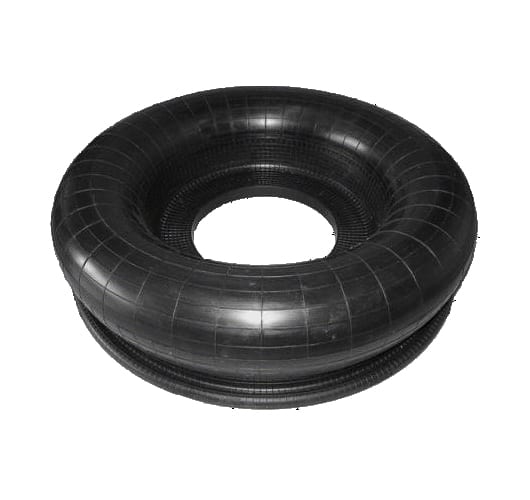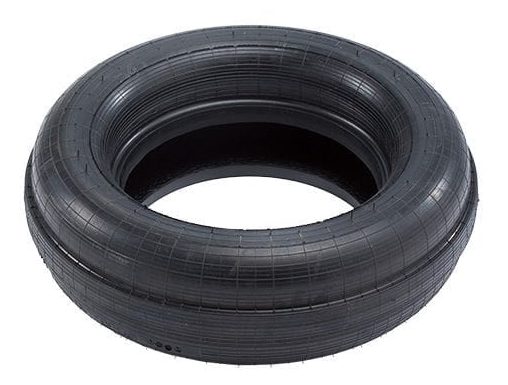Air Suspension Advantages and Disadvantages
An air spring system provides a cushion between the vehicle body and wheel to reduce the vibration felt during travel. This blog will explain air spring systems and discuss air suspension advantages and disadvantages, to give you a better understanding of how they work. In particular, it will cover the benefits of air suspension when used in cars, but some of the principles carry over to heavy vehicles like trucks, tractor-trailers and passenger buses and trains.
Air Spring Systems Explained
An air spring system replaces the traditional spring suspension, replacing steel coil springs (or leaf suspension) above the vehicle wheels with airbags made of rubber and polyurethane. These airbags are inflated by an onboard air compressor or electric pump, to a certain pressure to behave in a similar way to traditional springs. The air direction is controlled by air valves that let the air go into different parts of the system to inflate.
Air Suspension Advantages:
- Comfort
One of the main benefits of air suspension cars is the improved comfort behind the wheel, making it good for daily driving. The adjustable air suspension makes for a more comfortable ride on poor quality roads and can improve control when off-roading. The use of airbags above your wheels, rather than springs, also improves the quality of the journey for passengers.
- Reduced noise and vibration
Another advantage of air suspension is less wear and tear on the suspension system and vehicle components, due to reduced harshness and vibration, particularly with heavy-duty driving. Air suspension compensates for potholes, uneven surfaces and speed bumps in the road allowing your vehicle to glide easily over the road surface.
- Versatility on the road
An air spring system allows the driver to adjust the car to suit their personal preferences for ride comfort and handling. When the driver can choose between a harder drive for motorway driving or a softer feel for demanding roads, the driver maintains control no matter the terrain. Higher cornering speeds and greater levels of control when turning corners can be achieved with air suspension, as the vehicle is better suited to the conditions of the road. An adjustable suspension that can lower the vehicle to the ground means the drag can potentially reduce at higher speeds. Additionally, the ability to raise the car for everyday use is extremely handy for off-road driving.
- Versatility on load
Another advantage of air suspension is its versatility on load. The height of the car can be adjusted according to the load, the ‘kneel’ or ‘raise’ functions making loading easier from the outset. The purpose of air suspension is to give consistency across all wheels, and there is a lower risk of body roll when turning corners, less risk of breakages and less load shifting and damage caused due to reduced vibrations through the suspension. Plus, better control due to increased firmness provides improved towing capabilities for larger vehicles.
- Fuel economy
As vehicles with air suspension can be adjusted to road type, they benefit from better fuel economy. For example, a lower ride height for motorway driving means better aerodynamics and reduced wind resistance. Conversely, a suspension that is better suited to a particular road surface with better control can achieve higher corner speeds and lead to time-saving on routes with many turns.

Air Suspension Disadvantages
- Cost
One disadvantage of an air spring system is the cost to buy, which is higher than a traditional spring suspension system. Only luxury cars tend to have a built-in air spring system as standard. However, the cost of installation could be offset by the resale price, which is generally higher than cars with a steel spring suspension.
- Maintenance
Another air suspension disadvantage is the cost of maintenance. In the short term, air suspension cars are reliable but tend to see longer distance travel and time on the road where frequent repairs may become necessary. Not repairing your suspension isn’t really an option; if your suspension is broken your car will tilt to one side while driving. You can replace the air spring system with a cheaper, traditional steel spring, but you would lose the known benefits of air suspension cars – so you’ll probably understand that the cost is a necessary evil.
- Mechanical issues
Air suspension systems are also prone to mechanical issues. Your suspension may suffer malfunctions from rust or moisture damage from the inside, or an air fitting failure of the air tubing connecting to the air system. Leaks in air springs are also common and could lead to compressor burn out.
Is Air Suspension Worth the Money?
While air suspension disadvantages include a higher cost to install and maintain, the benefits of air suspension cars speak for themselves. An air spring system is a reliable feature that provides improved comfort and quality when driving, the ability to tackle any terrain, the ability to carry a variety of load weights, and potential for better fuel economy.
GMT Rubber can offer a wide range of air spring systems from our existing range or air bellows and auxiliary springs. We also supply additional secondary rubber springs for extra suspension protection, in the event of any air leaks and ensure high passenger comfort whatever the application. We specialise in developing and manufacturing air suspensions for railway vehicle bogies. Still, you may wish to weigh up the air suspension advantages and disadvantages and speak to one of our experienced engineers to design a bespoke air spring system to meet the requirements of your commercial vehicles.










